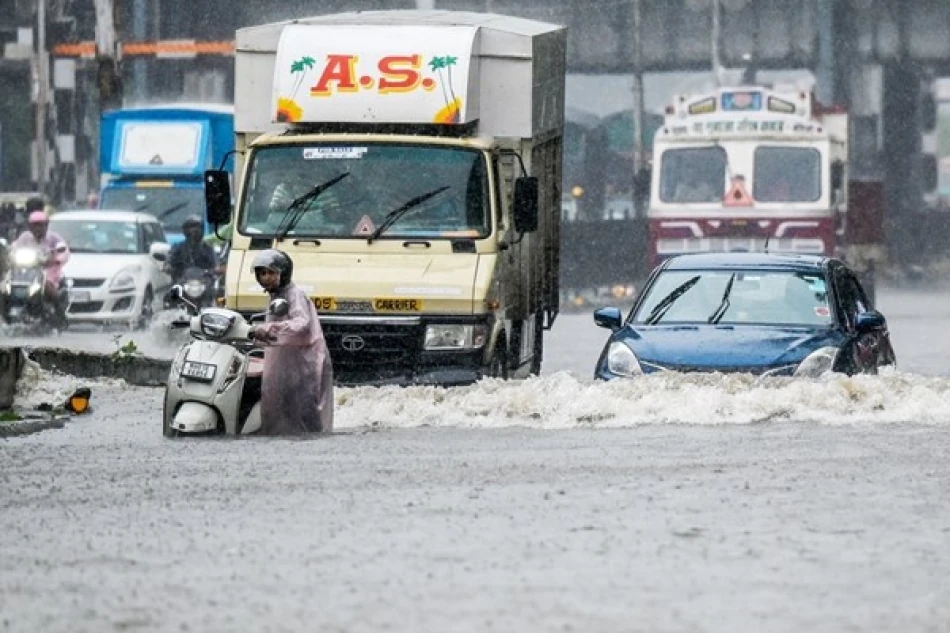
Heavy Rains Flood Mumbai's Roads: Navigating India's Monsoon Mayhem
Mumbai Paralyzed as Torrential Monsoon Rains Expose India's Infrastructure Crisis
India's financial capital ground to a halt Monday as heavy monsoon rains dumped over 140mm of water in just hours, flooding streets, shutting schools, and disrupting air travel. The deluge has once again highlighted Mumbai's chronic vulnerability to extreme weather and raised urgent questions about the city's preparedness for climate change impacts.
Immediate Impact on Critical Infrastructure
The meteorological department recorded rainfall exceeding 140 millimeters across several Mumbai districts during Monday morning alone, transforming major thoroughfares into waterlogged corridors. Traffic came to a standstill as vehicles became trapped on submerged roads, while authorities suspended flight operations at what is typically one of Asia's busiest airports.
Local authorities issued high-alert warnings for Mumbai and surrounding regions, with forecasters predicting continued heavy rainfall through Tuesday. The government has advised residents to remain indoors as emergency services struggle to manage the widespread flooding.
A Recurring Crisis for India's Economic Hub
This latest flooding episode underscores Mumbai's persistent battle with monsoon seasons, despite years of promised infrastructure improvements. The city of 20 million people contributes roughly 6% of India's GDP, making weather-related disruptions economically significant beyond local impacts.
Historical Pattern of Monsoon Disruption
Mumbai faces similar paralysis almost annually during the June-September monsoon season. The 2005 floods, which killed over 400 people, prompted infrastructure overhauls that have proven insufficient. More recent flooding in 2017 and 2019 demonstrated that drainage systems remain inadequate for handling intense rainfall events that climate scientists predict will become more frequent.
Economic Implications for Markets and Business
The disruption carries immediate consequences for India's financial markets, with the Bombay Stock Exchange and major corporate headquarters located in the affected zones. International businesses operating from Mumbai face operational challenges, while the city's port—one of India's largest—may experience cargo delays affecting supply chains.
For investors and businesses, Mumbai's recurring flood vulnerability represents a growing climate risk that demands serious infrastructure investment. Companies increasingly factor extreme weather resilience into location decisions, potentially affecting Mumbai's competitiveness against other regional financial centers like Singapore or Dubai.
Climate Adaptation Challenges
Unlike cities such as Amsterdam or Venice that have developed sophisticated flood management systems over centuries, Mumbai's rapid urbanization has outpaced infrastructure development. The city's drainage system, largely built during British colonial rule, cannot handle modern rainfall intensity combined with unplanned construction that blocks natural water flow.
This contrasts sharply with cities like Singapore, which has invested heavily in urban water management, or Copenhagen, which has implemented innovative stormwater infrastructure. Mumbai's challenges reflect broader issues facing rapidly growing megacities in developing nations where climate adaptation struggles to keep pace with urban expansion.
Looking Beyond Immediate Response
While authorities focus on immediate flood response, the recurring nature of these disruptions signals deeper systemic issues requiring long-term solutions. Mumbai needs comprehensive urban planning that integrates climate resilience, improved drainage systems, and sustainable development practices.
The city's experience serves as a cautionary tale for other emerging market financial centers about the critical importance of climate-proofing urban infrastructure before extreme weather events become unmanageable.
 Layla Al Mansoori
Layla Al Mansoori







